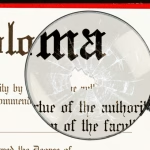Parnas wasn’t providing unique reporting or in-depth details. He offered speed as well as a thorough understanding of how to connect with users on TikTok, which might not seem like a clear or reliable news source: Legislators in Washington, D.C., are concerned that ByteDance, a Chinese company that owns the platform, may manipulate it to further Beijing’s objectives. Each user receives a personalized feed of brief, attention-grabbing videos from TikTok’s algorithm; this arrangement doesn’t seem likely to provide comprehensive coverage of current affairs.
Nevertheless, a Pew Research Center survey conducted last fall found that 39% of adults under 30 and 17% of adults overall regularly use the app to learn about current events. Traditional media outlets make up less than 1 percent of all American TikTok accounts. Rather, users are depending on “newsfluencers” like Parnas as well as skits that mimic the most recent Supreme Court decision, political agenda hype videos, and other news-related clips that are difficult for non-TikTok users to understand.
A video that went viral last summer, following the initial attempt on Trump’s life, combined snippets of Joe Biden’s well-wishes with footage of the bloodied Republican clenching his fist. Concurrently, Chappell Roan’s romantic ballad, “Casual,” which alluded to a bromance, began to play. As tensions between the United States and Iran erupted in June, I noticed a series of videos on the subject, referred to as “edits”—minute-long music montages—on my For You page. One intercut footage of bald eagles gazing menacingly as AC/DC’s “Thunderstruck” blared, zooming F-16s, and Captain America threatening his adversaries in an elevator. Skeptics may question: What precisely are people learning when they claim to get their news from TikTok?
Regular viewers of TikTok’s current affairs content insist that they can understand what’s happening in the world—that the entertainment value and brevity make up for a lack of factual detail, even if they must infer facts from memes. According to Miles Maltbia, a 22-year-old cybersecurity analyst from Chicago, “a lot of things are in simpler terms on TikTok.” “It’s the best place for me to get all of my news because of that and convenience.” Additionally, as more people use TikTok to get news, creators like Parnas are figuring out how to manipulate the algorithm.
The 26-year-old Parnas works as a lawyer. He informed me that he uses a legal tracker to keep tabs on any court case that he considers important. From a young age, he was deeply involved in politics. (During Trump’s first term, his father, Lev Parnas, briefly rose to prominence as a Rudy Giuliani associate. Aaron Parnas has declared, “I love my dad.” “And I’m not my father.”) C-SPAN broadcasts “all day, every day.” Additionally, he has turned on X and Truth Social alerts for posts from all of the major world leaders and members of Congress. He presses the record button when he determines that the alerts on his phone are noteworthy. He is a one-man media behemoth thanks to his quick-reaction news formula: On TikTok, he currently has 4.2 million followers. Over 100 million Americans have viewed his videos on the platform in the last six months, he informed me. He recently conducted interviews with French Foreign Minister Jean-Noël Barrot, Senator Cory Booker, and the editor-in-chief of this magazine. His Substack newsletter also has the most subscribers of any in the “news” category.
However, Parnas’s TikTok business strategy is largely dependent on coverage from other sources. Additionally, people whose media consumption habits are not already adjusted for TikTok may find Parnas’s constant barrage of information startling. “Good evening” and “Welcome” are not used. However, he is reaching a demographic that other media do not: He believes that “young people who don’t watch the news and never have and never will” make up a large portion of his audience. “They simply don’t have the attention span to,” he continued.
Ashley Acosta, a rising senior at the University of Pennsylvania, told me she enjoyed Parnas’ independence from corporate media and his ability to be his own boss. She compared him to media organizations like ABC, which recently dismissed correspondent Terry Moran for calling Trump a “world-class hater” in an X post. Another 24-year-old University of Texas at Austin alumnus who views Parnas as a useful news source is Nick Parigi. He informed me, “You’re getting less propagandized.” “It’s not promoting a cause.” Although he took pride in providing basic information in an easy-to-understand manner, Parnas openly endorsed Kamala Harris’s presidential campaign last year. He said to me, “I wish we would just return to the fact-based, Walter Cronkite-style of reporting.” “So I do that.” You would have to watch Parnas’ TikToks at half speed to hear him sound like the legendary CBS News personality.
Jack Mac is comparable to a shock jock if Parnas is a genre-defining anchor. His work, which consists of commenting on stories he finds interesting or humorous—like the suspension of a “patriot” New York firefighter for allowing young women to ride in his firetruck—is referred to as “journalisming” by the creator, who has 1.1 million followers.
Do I believe that TikTok is the most reliable news source? “No,” Olivia Stringfield, a 25-year-old marketing professional from South Carolina, informed me. She likes Mac, though, because he provides “a more glamorous way to get the news”—and a quick, easy way to do it. Stringfield remarked, “I don’t have the time to sit down and read the paper like my parents did.”
According to Robert Kozinets, a professor at the University of Southern California who has researched Gen Z’s TikTok media consumption, users hardly ever look for news. It locates them. According to him, “the default position is: Algorithm, let the information flow over me.” “Fill me up. When I notice something intriguing, I’ll cut it short.” In order to make the news more algorithm-friendly on a platform where little content is searched, creators manipulate it.
One well-known media outlet that has capitalized on the expanding popularity of TikTok news skits is The Washington Post. In one Supreme Court video, a Post employee dressed in a college graduation gown channels Chief Justice John Roberts by using a toolbox mallet as a gavel. Her background turns into red curtains as she imitates him. She asserts that South Carolina has the authority to stop Planned Parenthood’s Medicaid funding. The demand for this new type of content is demonstrated by Dave Jorgenson, who started the Post’s TikTok channel in 2019 and recently announced that he is leaving to start his own online video business.
The “mainstream media” has already lost, according to the January 2025 issue.
For a newspaper of its caliber, The Post’s adoption of TikTok has been out of the ordinary. There are clear concerns regarding accuracy and veracity given the popularity of vibes-based content on the video platform. Through the comments section, I was able to speak with a number of users who trusted crowdsourced fact-checking to counter false information. I questioned Chicago analyst Maltbia about how he determines which comments to believe. He remarked, “I usually look at the ones that are the most liked.” “But I’ll probably Google it if it still seems a little shady to me.”
Parnas defended TikTok news’s integrity. He informed me that there isn’t any more false information on TikTok than there is on Twitter, Fox News, and occasionally CNN. Since TikTok’s factual accuracy has not been thoroughly investigated, that claim cannot be verified. According to a report by the media watchdog NewsGuard, 20% of TikTok’s news search results were inaccurate; however, none of the users I talked to expressed any dissatisfaction with the search feature.
It’s unclear at this time if TikTok will continue to grow in popularity as a news source. Congress overwhelmingly passed legislation to force the Chinese owners of TikTok to sell, citing concerns about hostile foreign control over a significant communications platform. However, since taking office, Trump has now postponed the law’s implementation three times.
Meanwhile, platform users continue to expand what constitutes news. According to Kozinets, a professor at USC, “news is anything that’s new” on TikTok. In order to attract more attention on the platform, creative entrepreneurs who are interested in current affairs will continue experimenting with different delivery methods. Additionally, comparable apps will undoubtedly fill any void left by TikTok being sold or shut down. The difficulty of preparing news for a black-box algorithm’s distribution appears to be permanent.













